We are now just over a week away from the Medieval Canterbury Weekend and it is a matter of now doing the finishing touches so that our ticket holders have a great time. Moreover, we hope our speakers greatly enjoy their time in Canterbury too, as well as our terrific band of volunteers, including CCCU staff members who have volunteered to chair sessions and to help the tour leaders, and our postgraduates and undergraduates who will be helping during the Weekend. Also, we get brilliant support from Craig and his team at the CCCU Bookshop. Dr Diane Heath has started the ball rolling, and we have our usual twitter set up, yes I know ‘X’, and this time it is #MCW24 so please feel free to use and follow.
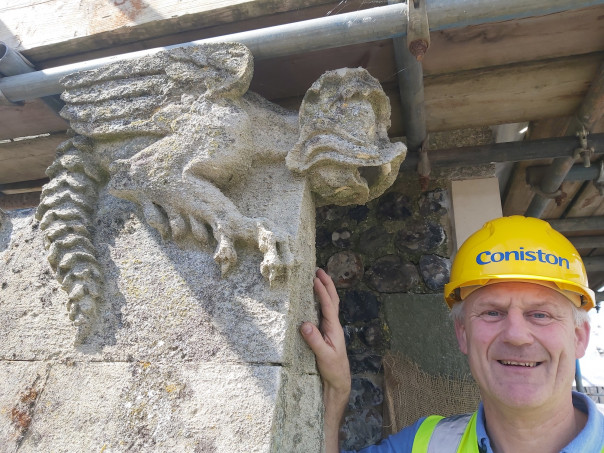
For this week, firstly I want to draw your attention to Professor Carolyn Oulton’s and Michelle Crowther’s Kent Maps symposium that will be taking place on Thursday 25 April entitled ‘All Change! Place and Modernity‘ between 10am and 3.30pm in Verena Holmes VH2.39 in the morning and Augustine House, AH3.31 in the afternoon. This is a free event and as Carolyn says: “Celebrating the bicentenary of Wilkie Collins’s birth and 130 years since Sarah Grand popularised the term ‘New Woman’, this year’s symposium explores responses to modernity and change across literature, history and culture. Indeed, ‘All Change! Place and Modernity’ focuses on two literary events: the 130th anniversary of Sarah Grand’s article ‘The New Aspect of the Woman Question’, believed to be the first use of the term ‘New Woman’; and the bicentenary of the birth of Wilkie Collins (1824–1889), who invented sensation (aka railway) fiction. In addition to the symposium speakers, we are inviting KS5 students to be part of digital humanities workshops focussed on mapping Grand and Collins with Dr Cat Cooper, Senior Lecturer. In the afternoon, they will explore the archives at Canterbury Christ Church University to see the materials we have related to these figures, and in the morning have an opportunity to sit in on panels as part of the main Symposium.” For those new to Kent Maps Online, it is a Digital Humanities project, run by Michelle and Carolyn, celebrating and commemorating the literary and cultural heritage of Kent through a website, annual symposium and related events. You can still book a place at: https://www.canterbury.ac.uk/arts-and-culture/event-details.aspx?instance=448006 and Carolyn will be delighted to see you. For the photos for this week, I’m featuring Drs John Bulaitis and Diane Heath who have been out and about in east Kent. As mentioned last week, John has been busy recently giving talks at Sandwich on “The respectable fascist’ – George Christopher Solley, Mayor of Sandwich (1919-21)”, so these are from John’s talk at Sandwich Guildhall; and at Ulcombe on his new book (to be published in June) on the Tithe Wars.
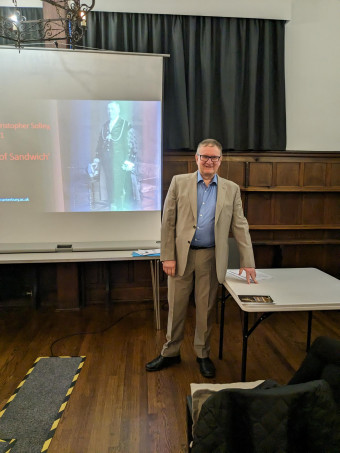
Additionally, Diane visited Dover’s Maison Dieu this week to examine the ‘medieval’ animal carvings with Martin Crowther because he wanted her, as the expert on the medieval bestiary, to make a podcast about them. And who can resist such medieval animals!
Now to the report for this week because it was the monthly presentation by one of the Kent History Postgraduates and the speaker this time was Jason Mazzocchi. He is very interested in social network analysis which views the ties or linkages between two or more persons, groups, or institutions, as the essential units of analysis, for example through resource transfer, shared membership, or kinship, amongst other means. For his chosen case study of late Elizabethan and early Jacobean Faversham, he featured the merchants, mariners and fishermen, many of whom were members of the Fraternity of the free Fishermen and Dredgermen of Faversham, to explore how they through their individual and corporate business and other dealings initiated and maintained their inter-relationships in the town, across east and north Kent, and with those in London. Many of these men, and as Jason said, the documents point to this being a male-dominated society, headed multi-occupational households, thereby adding to the complexity and often dynamic nature of the networks these men developed, which even extended beyond the grave through their bequests to family, friends, neighbours and others within and beyond Faversham. To exemplify this, Jason drew on the will of Robert Colwell whose post-mortem gifts of gold angel coins to be fashioned as commemoration rings demonstrates the rich symbolism of such bequests, which would have been understood by recipients, but also by those who heard about or who saw the resulting rings.
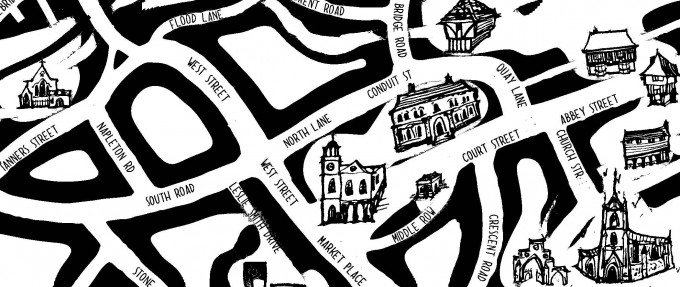
Furthermore, as a limb of Dover and therefore one of the Cinque Ports, Faversham and its leading citizens were involved in yet further layers of interrelationships. For even though the ancient Crown – Cinque Ports relationship through Ship Service was no longer operational, the tie-in between town and Crown remained an important tradition that all continued to value. Even though this might be viewed as more ceremonial than practical, the royal court’s London presence and its officials both there and in Kent through, for example, the network of JPs extended the involvement of Faversham men across the county and with London.
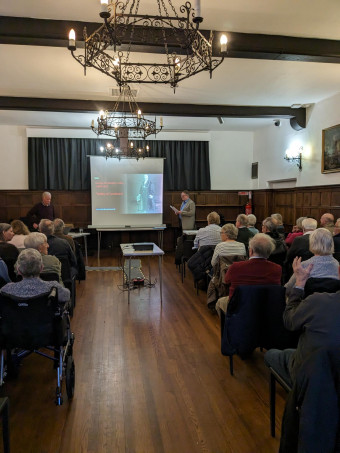
Equally significant, as Jason highlighted, was the inter-dependence between urban and rural society because as well as their trading links with London merchants, their counterparts in Faversham were often holders of agrarian lands – in the parishes of the town’s hinterland but also as far as Worth in the east and Romney Marsh in the south. For grain was a key commodity, to supply London’s rapidly expanding population as well as being shipped overseas when government regulations allowed. An example of such a merchant, landholder and cornmonger is Henry Saker, and Jason discussed Saker’s position in Faversham for not only was he extremely wealthy with connections to London and east Kent, but as mayor he was an important leading citizen, thereby highlighting the various crossovers between the commercial and the civic lived experiences of these men, as exemplified by their urban property holdings.
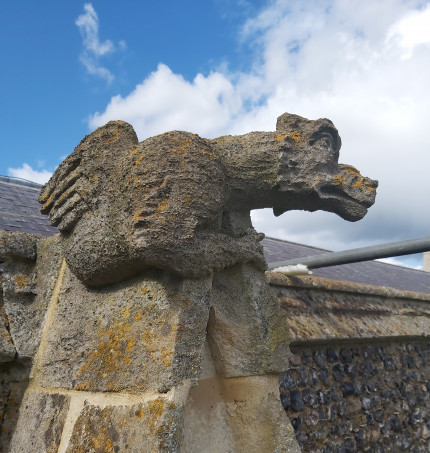
Moreover, looking at the role ships, shipping, and oysters played in the life of many Faversham householders allowed Jason to explore negotiation and conflict, as exemplified by the Exchequer case involving the oystermen of Faversham and Milton. This 8-year dispute resulted in the production of maps demonstrating the location of the oyster grounds, the fish weirs and the reclaimed (or inned) marshland. Such land was valued not only by those in and around Faversham, but also the Crown and members of Kent’s gentry, specifically Thomas Digges, thus offering evidence of inter-connections and webs of influence that were vertical as well as horizontal in early modern Kent.
As Jason showed, the diversity of occupation in Faversham was considerable during this period, in part a reflection of the manufacturing industries required to sustain this urban market centre but similarly a reflection of the networks sustained through trade and industry. As he noted these not only looked to London and other parts of the county, but also abroad, Faversham providing an important hub.

Jason’s very interesting presentation generated questions and comments from those in the room and online, and the discussion had to be continued beyond the seminar because we ran out of time. So many thanks to all who took part and especially to Jason, who is in the process of developing this case study. And it is also great to be able to report that Janet Clayton is now Dr Janet Clayton, which means she joins the illustrious Kent History Post-Docs group with the founder members: Drs Dean Irwin and Lily Hawker-Yates – brilliant news!
 Centre for Kent History and Heritage
Centre for Kent History and Heritage Sheila Sweetinburgh
Sheila Sweetinburgh 2053
2053

